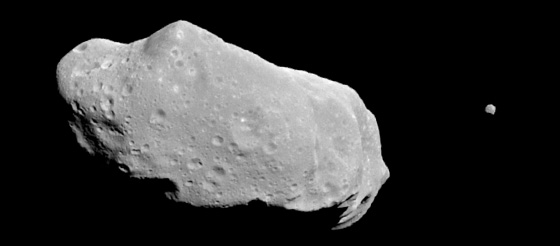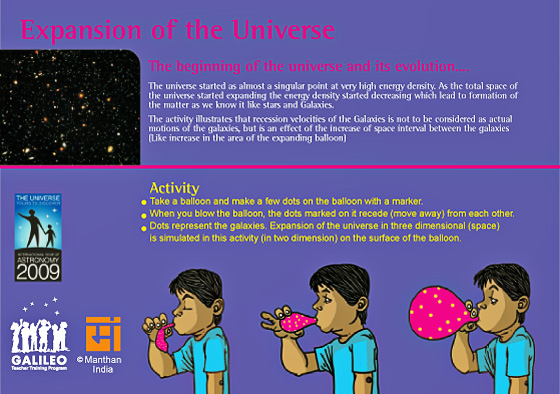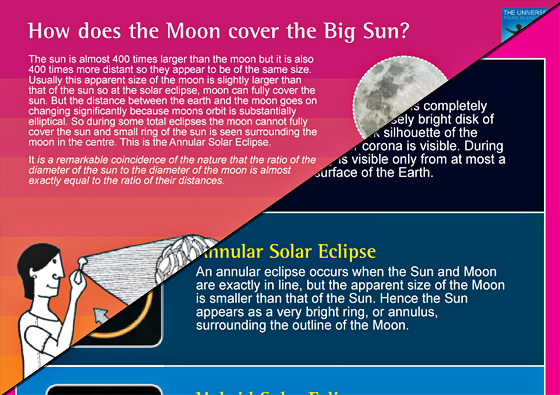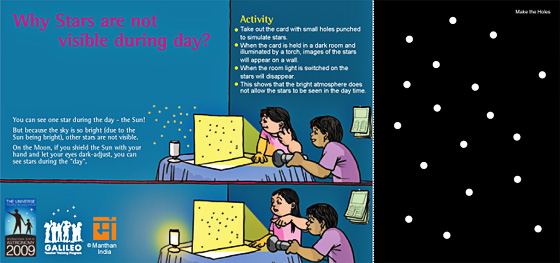
Apr 20, 2009 | News, Projects
The International Asteroid Search Campaign (IASC) is a program for high school and college students who search just hours-old astronomical images for original discoveries. These discoveries include Main Belt asteroids and near-Earth objects (NEOs). Students download the images on a daily basis, perform the analysis with provided software tools, and report their discoveries, which ultimately are recognized by the Minor Planet Center (MPC; Harvard University) and the International Astronomical Union (IAU).

Apr 20, 2009 | Fundamental Astronomy, Resources

This is a very simple hands-on activity to show the expansion of the Universe. It uses dots on a balloon to show that the observed recession velocity of galaxies can be explained by the expansion of the Universe as a whole.

Apr 20, 2009 | Fundamental Astronomy, Resources

This is a very simple hands-on activity to show why a small body, like the Moon, can cover a much larger object, like the Sun. The apparent size of an object depends on the its real size and the distance it is from us. In the case of the Sun and the Moon, their sizes and distances are such, that their apparent size on the sky is very similar. That is why Total Solar Eclipses exist.

Apr 20, 2009 | Fundamental Astronomy, Resources

This is a very simple hands-on activity to show why stars twinkle. A small hole on a cardboard, a light source and a heat source in a darkened room, are all that is needed to simulate the effect of the earth atmosphere on the observation of the stars.

Apr 20, 2009 | Fundamental Astronomy, Resources

This is a very simple hands-on activity to show why the stars are not visible during the day. Turning the lights on in a darkened room, where you were using a torchlight and a cardboard with several small holes, to simulate stars in the night sky, will make the stars disappear.









